Editor’s Note
When investigators contacted the Force Science Institute (FSI) to consult on the Daniel Holtslander case, Dr. Bill Lewinski, executive director of FSI, identified inconsistencies between the suspect’s version of the assault and the available forensic evidence. Notably, the position that the suspect claimed to have been in during the assault (lying face up in the back of a truck bed) would have made it difficult for him to inflict the injuries sustained by the victim.
Recognizing that a top-notch injury biomechanics and reconstruction expert would be required, Dr. Lewinski referred investigators to Dr. Geoff Desmoulin and his team at GTD Scientific (GTD). The GTD team performed a full investigation which included valuable injury biomechanics testing and incident reconstruction. Their independent investigation allowed them to determine the accuracy of the suspect’s version of the assault, including the penetrative force required for some of the injuries.
The Force Science Institute is proud to share the following article, provided by GTD as a summary of their outstanding work.
– Von Kliem, Executive Editor, Force Science News
Cold case homicide investigations are challenging. A recent case that the Luzerne District Attorney’s Office and the Pennsylvania State Police brought to the team at GTD Scientific was no exception.
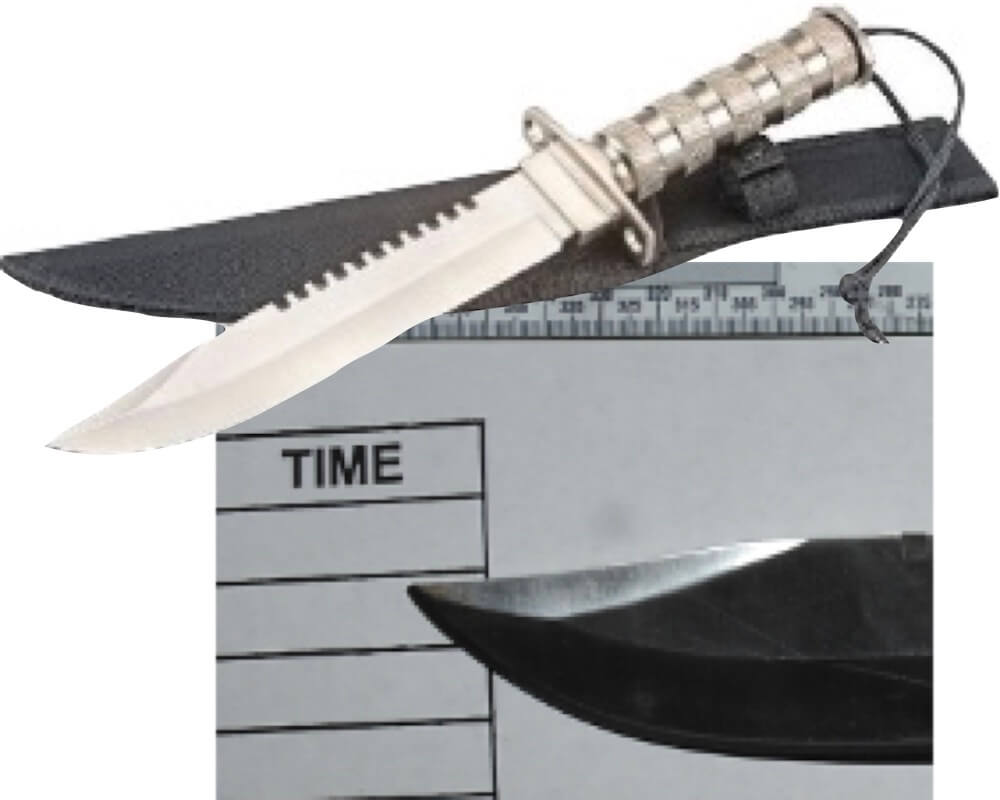
The defendant, Daniel Holtslander admitted that he had stabbed his friend, Kurt Swan, multiple times. He also confessed to dumping the body and to destroying evidence. Mr. Holtslander claimed the killing was done in self-defense under the castle doctrine of Pennsylvania.
When interviewed by homicide detectives, the defendant claimed to have been lying on his back, sleeping in the bed of his pick-up truck with his head toward the rear. Since this was also his home, the truck was legally defined as his ‘castle’. Mr. Holtslander claimed that he heard someone open the rear bed door of his pick-up and feared for his life. Without looking, he said he armed himself with a knife in each hand and stabbed overhead, superman-style, killing his friend. With no hard evidence beyond the body, the truck and the murder weapons, GTD Scientific Inc. were asked to determine if this account was supported or denied by the few facts that existed.
The Puzzle Pieces
The body had 4 stab wounds that were all located on the torso. The wounds gave a general sense for the angle of each thrust, but decomposition made it impossible to determine the exact blade orientation of each strike. One of the fatal blows was a deep thrust that punctured the sternum and went into the heart. With soft tissue being problematic, we focused on the impact on the sternum and on another stab that caused a rib fracture.
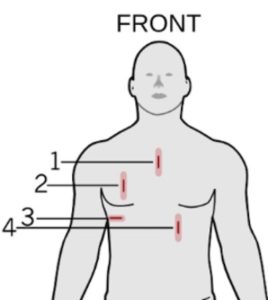
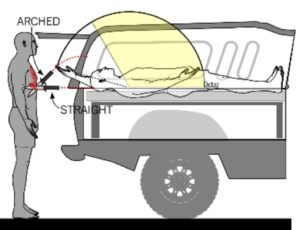
Fortunately, the homicide investigation team did a great job of documenting the truck. They took a high-resolution laser scan that included the large amount of clutter within the truck bed. The scan of the mattress gave us Holtslander’s exact height relative to the victim.
The most critical evidence was the defendant’s highly detailed account of what he said happened. This gave us his stated position, as well as the very specific stabbing motions that he claimed caused the murder. When combined, all this evidence raised a key question.
Were all wounds inflicted from one position as Mr. Holtslander claimed? Or… was there more to the story than this?
An Answer Within
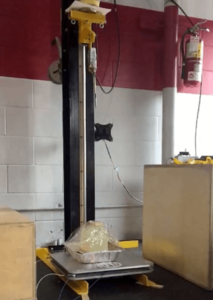
Human flesh and bone have known resistance properties, but the exact penetration force of the large hunting knife needed to be determined. We constructed a synthetic sternum and knives were attached to our drop tower so gravity could plunge them from various heights through the synthetic sternum and into calibrated ballistics soap which mirrored the density of human flesh. This gave us a baseline measurement for the penetrating force of the weapons. Similarly, we used literature and tests to determine the force needed to fracture the ribs.
One fact that emerged was that the rib fracture was caused by the impact of the knife hilt on the victim’s chest, not the blade – a strong indicator that extreme force was used. This could never have been determined without biomechanical testing, because months of decomposition had long-since erased all surface signs of bruising and abrasion.
Once the stabbing forces were known, we could then test whether the defendant could have generated the wounds with the specific stabbing motions that he described. This led to a second series of tests on various stab thrusts, knife positions and angles.
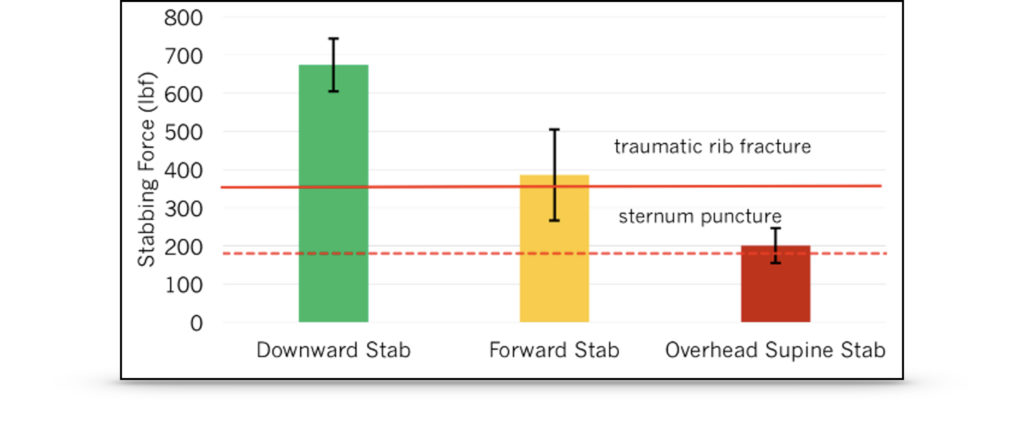
A New Confession
The tests showed that the strikes the victim testified to were highly unlikely to penetrate the sternum and impossibly low in force when compared to the threshold needed to fracture the rib. We concluded that it was “beyond a reasonable doubt” or in “science-speak” – 95% confident – that at least one of the lethal knife thrusts was generated outside of the truck bed and the castle defense theory.
When the GTD Scientific analysis was turned over to the defense team, the castle defense doctrine was withdrawn. It was replaced with a guilty plea for third degree murder.
The Outcome
In this case, the detectives did a great job of documenting the crime scene and locking the defendant into a narrative that could then be tested against. This allowed the team at GTD Scientific to prove what was possible within the defendant’s account of events and more importantly – what was not.
About the Author
Geoffrey T. Desmoulin, PhD., RKin., EngL., Principal of GTD Scientific Inc., holds two degrees in both Engineering Sciences and Kinesiology, allowing him to predict human injury in any environment. He was previously an Emergency Medical Technician, firefighter and military reservist. Since 2009, GTD Scientific Inc. has garnered Federal and Supreme Court qualifications and an extensive international client list within the legal and law enforcement communities. Click to send message.


Can’t thank Dr. Lewinski and the Force Science group enough for all their support over the years. Look forward to sharing more work with you and hopefully you can hold your conference in 2021! Best of luck!
Great read!